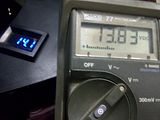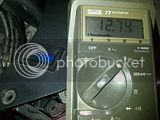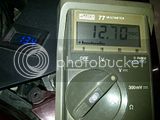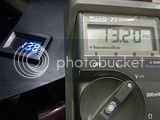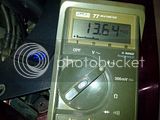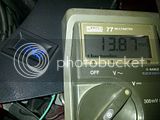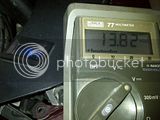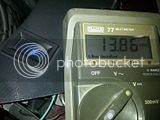I agree. It would be very valuable to know where this added resistance is coming from. Seeing as it is a slowly developing, chronic problem, it may be an accumulation of multiple small resistances in each of the connection points. Every crimp and connector is suspect. But it is also possible that the wire itself that Yamaha used is not aging gracefully and the resistance of the wire is actually increasing with time and weather.Yeah, I plan on replacing the wire, but the tech in me still wants to find the smoking gun. From what you all have done I'm sure it's the wire, but I want to run a test before I replace it. I just don't have time to get into it now.
No, a megger is used to measure very high resistances (megohms) like in insulation leakage tests. In this circumstance we are looking for very low resistances. The instrument that you use to make low resistance measurements is a 4 wire Kelvin meter, and not many folks will have one of those laying around. (ionbeam may, I don't)I think the wire needs to be tested under a load. An ohm meter is no good. Even a tiny wire has continuity. I think there is a tester called a Megger. It not only tests continuity but also load capacity? I'm not sure. Where is Alan?
The bike itself is a pretty good low resistance, high load tester. All you need do is determine the current going through the wire and then measure the voltage drop across each component to know the resistance of it. The current is the same everywhere along the entire series circuit, so you just need to measure that (under the desired load) once and then use a digital DC voltmeter to make measurements across the component in question. Voltage / Current = Resistance
If you want to do the same thing out of circuit, just hook up an external DC power supply (battery) with some current limiting resistance added, measure the current and then the voltage drop on the component under test. A voltmeter is much more accurate than an ohm meter at these low resistance values (an ohm or less).
One thing to keep in mind is that copper, like most metals, has a positive temperature resistivity coefficient. It gets more resistive as you heat it. And as you run current through it, you heat the wire. So, some of this mysterious resistance may be a bit of thermal effect in the wire harness. In other words, it may measure fine when it is hooked up to a low current source or tester, but have much higher resistance when you are hitting it with 30 amps.
This should not be the case. An increased resistance of the output wiring will actually limit the amount of current out of the R/R. The generator and regulator will not be "working" any harder. What causes the Stator to overheat is when you ask it to supply more current than it is capable of. The windings of the stator heat up, become increasingly more resistive, which causes more heat, etc.Of course this brings up my earlier pondering a few posts back - does the inferior R/R wiring, connectors, etc. lead to the early demise of the R/R and/or Stator because both of these components end up having to work at max capacity ALL the time just to try to provide sufficient Voltage to charge the bike.
So having too many high power consuming devices is how you burn out stators. Don't forget that a bad battery can be a very high power consuming device, if it requires constant charging.
Last edited by a moderator:






















































